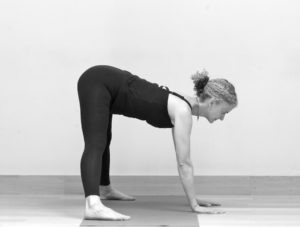
by Leslie Howard
The most common pelvic issue for women is incontinence, and that can take a tremendous toll on quality of life. It can cause shame, fear, and even depression. Women who experience incontinence may go into the world with serious fears: Where’s the nearest bathroom? What if I can’t make it to a bathroom in time? Can other people tell if I’ve leaked? Even if the condition isn’t debilitating, it can seriously curb activities that once brought joy. I have talked with runners, weightlifters, and self-described gym rats who felt they had to give up their passions because of fear of urinary leakage. Moms and grandmothers may be afraid to play too vigorously with the kids or might avoid going on long road trips. Urinary incontinence impacts life.
According to the Centers for Disease Control, more than one-half of non-institutionalized women in the U.S. age 65 and up reported urinary leakage in a national survey of more than 2,600 people. In addition, a 2011 analysis of nearly 64,000 U.S. women aged 36–55 determined that 13.7% of women who reported no or minimal leaking developed at least monthly incontinence over the next two years, corresponding to an average incidence of 6.9% per year. At the same time, only 38% of those in the study with frequent incontinence mentioned their urine loss to a physician, and only 13% reported receiving treatment.
As the study cited above shows, many women don’t tell their doctor about this issue. They may believe that urinary incontinence is a long-term side effect of having given birth, a symptom of menopause, or simply part of aging. If they do tell their doctors, sometimes they get a shrug and a “prescription” for—surprise, surprise—Kegel exercises.
However, there are many forms of incontinence and they should not all be treated the same way!
So if you are suffering from incontinence, it’s good practice to keep track of your liquid intake, your bathroom patterns, and what can trigger urination (like coffee, tea, or acidic drinks). But it is even more important not to lump the different forms of incontinence together. Stress and urge incontinence, which I’ll describe below, each have different causes and different manifestations. Usually, they require different therapeutic approaches. When someone with very tight pelvic floor muscles (called overactive or hypertonic) has symptoms of urge incontinence, they need to learn to relax the pelvic floor, which can lessen the urge sensation, or even make it go away. On the other hand, for someone with stress incontinence, learning how to stabilize and firm the pelvic floor muscles can vastly improve symptoms. It’s important to differentiate between the types of incontinence or we run the risk of engaging in a course of treatment that may make matters worse.
Let’s take a look at the three most common types: stress incontinence, urge incontinence, and mixed incontinence as well as how yoga can help with each condition.
Stress Incontinence
Stress here refers to something that works as a stressor on your pelvic muscles, such as coughing, sneezing, laughing, running, or jumping. The leakage associated with stress incontinence often happens without any forewarning, as there is sometimes no sensation of having to urinate. Stress incontinence is generally (but not always) associated with a lack of muscle tone in the pelvic floor (called underactive or hypotonic muscles).
Yoga can help strengthen the muscle tone in the pelvic floor because many poses require you to contract these muscles. Especially helpful are standing poses where both legs are externally rotated, which brings your sitting bones toward each other. Examples are Warrior 2 pose ( Virabhadrasana 2), Extended Side Angle pose (Utthita Parsvakonasana), and Triangle pose (Trikonasana). In addition, Plank poses and backbends can help to strengthen the pelvic floor and the connection to your abdominal muscles.
Urge Incontinence
In contrast to stress incontinence, urge incontinence is associated with clear sensation. In its early stages, urge incontinence produces a strong feeling of needing to urinate immediately without leakage. Just walking by a bathroom may be enough to conjure up that urge to go. Giving in to urge incontinence potentially sets up a faulty brain-bladder connection where the desire to urinate occurs even if there is little or no urine present. An easy way to check if your bladder is truly full is to keep a log of your need to go and how long your urine stream is. If you feel the urgent need to go, but your urine stream goes on for less than ten seconds, the bladder is not full.
As the condition worsens (sometimes aggravated by practicing Kegel exercises), “key in the door” syndrome may occur, whereby a person is able to hold their urine with an uncomfortable and overwhelming urge for a while (maybe the ride home) but when getting to their front door or bathroom door they experience leakage.
Urge incontinence is often due to overly tight (hypertonic) pelvic floor muscles. If urge incontinence is left unaddressed in its early stages, it may progress to the point where urine escapes before the person makes it to the bathroom. It seems counterintuitive but the solution is to relax your pelvic floor muscles.
Yoga can help you relax your pelvic floor muscles because many yoga poses require these muscles to lengthen, which stretches them. Examples of poses that can help include forward bending poses, such as Wide-Legged Forward Fold (Prasarita Padottanasana) and Downward-Facing Dog pose (Adho Mukha Svanasana) where your thigh bones (femur bones) internally rotate. When we internally rotate the femurs, the sitting bones have to widen apart, stretching all of the pelvic floor but especially the second layer. In addition to these forward bends, hip opening poses, such as Pigeon pose (Eka Pada Rajakapotasana) and lunges are helpful.
Mixed Incontinence
Is it possible to have both stress and urge incontinence? Unfortunately, the answer is yes, and this is called mixed incontinence. Here is a common example: A new mom carried a babe in her womb, supported by her pelvic floor, for nine months. She then went through a prolonged labor. Post-birth, she wants to get back in shape and goes to the gym. But after the “butts and guts” class, she finds that she has gotten herself “wet and upset,” and experienced stress incontinence. She resolves to remedy this and, having read about Kegel exercises, starts doing as many as she can each day. To avoid any further accidents, she does a “preemptive pee” anytime she leaves the house. Her brain-bladder connection goes awry and tells her that any amount of liquid in the bladder signals “find a bathroom.” Urge incontinence begins. Between the Kegeling and the urgent trips to the bathroom, she is now someone whose pelvic floor muscles are too loose and too tight, but in different areas. If this sounds familiar, it is crucial to address the urge symptoms first.
Yoga can help with mixed incontinence by addressing both the stress and urge aspects. To address the urge symptoms, you can relax your pelvic floor muscles by doing poses such as standing forward bends and hip openers. Then, when you have lengthened and released your pelvic floor and surrounding muscles, you can address the stress symptoms by adding in appropriate strengthening practices, such as side-facing (lateral) standing poses, planks, and backbends.
For more information on incontinence and yoga poses that can help, see my book Pelvic Liberation at www.lesliehowardyoga.com or Amazon.com.

Leslie Howard is an Oakland-based yoga teacher, specializing in all things pelvic. She leads workshops and trainings nationally and has written a book about caring for the female pelvis, Pelvic Liberation. She is a regular presenter for the Yoga Journal conferences and a regular contributor to Yoga Journal magazine. Her own struggles with healing her hips and pelvis led her to intense study of the anatomy, physiology, cultural messaging, history, and energetics of this rich area of the body. Her teaching is informed by over 3500 hours of yoga study with senior Iyengar yoga teachers. She considers Ramanand Patel her most important influence and mentor. She has designed two very successful studies for UCSF on how to use yoga to alleviate incontinence and pelvic pain.
Follow Yoga for Healthy Aging on Facebook ° To order Yoga for Healthy Aging: A Guide to Lifelong Well-Being, go to Amazon, Shambhala, Indie Bound or your local bookstore.


Leave A Comment